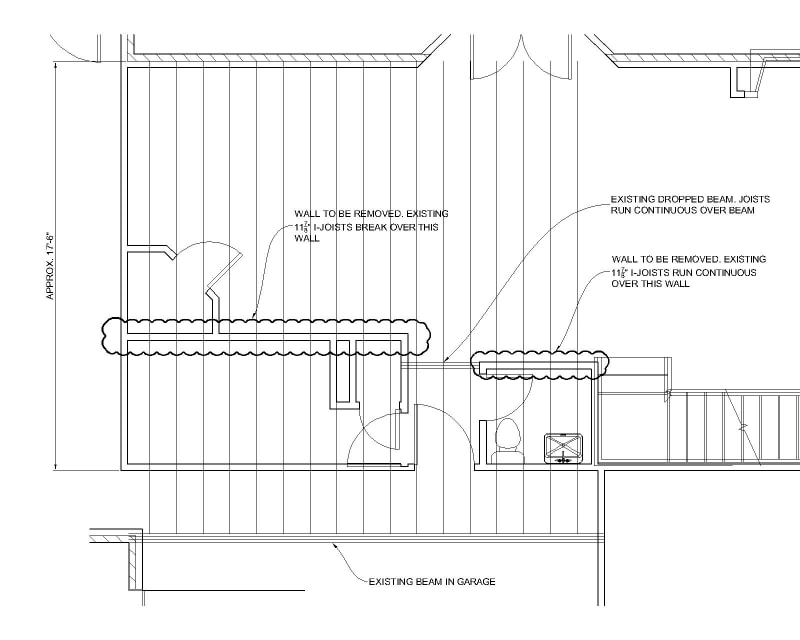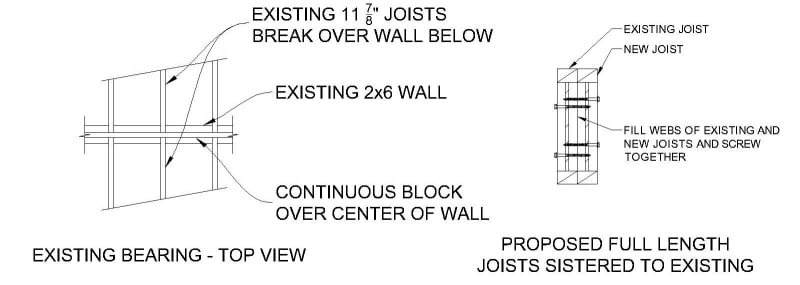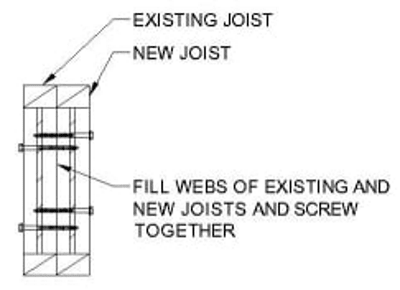Hi everyone, I've got a situation here with a proposed fix that I'm curious if anyone has some input on. I have posted a picture below of the second floor framing plan for a home that is going to be remodeled. The two bubbled walls are to be removed to open up the kitchen. When I was at the home I discovered that the joists over one of the walls break rather than running continuous over the wall (shown below). However, the joists over the beam and the other wall run continuous without breaking. The obvious solution would be to put in a big steel beam that spans across the new open kitchen, but doing so is not feasible on this project.
My question is what if we sister some new, full-length joists to the existing joists instead of putting in a beam? The span from the back of the home to the garage wall is only about 17'-6" which is easily doable for an 11 7/8" joist. I'm not sure why they didn't do that in the first place, but here we are. Has anyone done this before? Any suggestions or concerns?


My question is what if we sister some new, full-length joists to the existing joists instead of putting in a beam? The span from the back of the home to the garage wall is only about 17'-6" which is easily doable for an 11 7/8" joist. I'm not sure why they didn't do that in the first place, but here we are. Has anyone done this before? Any suggestions or concerns?




